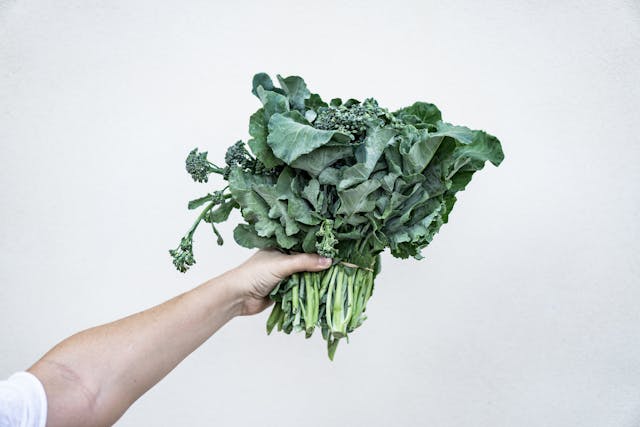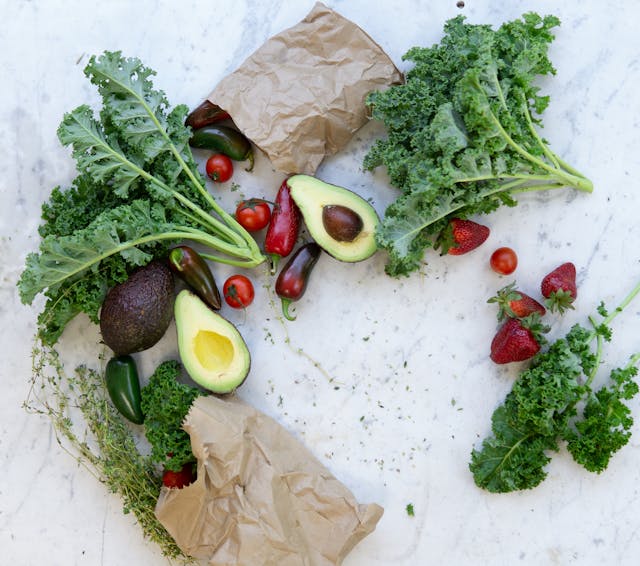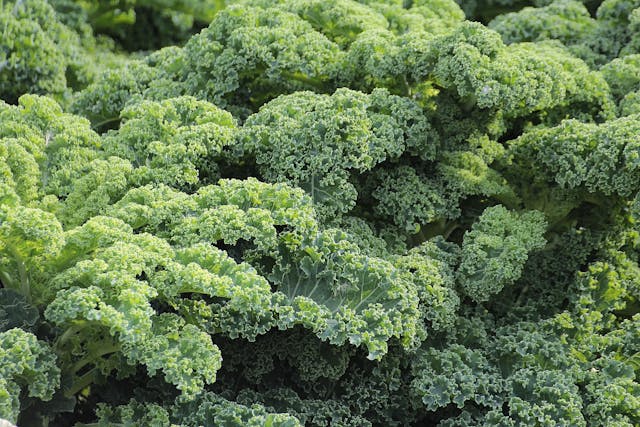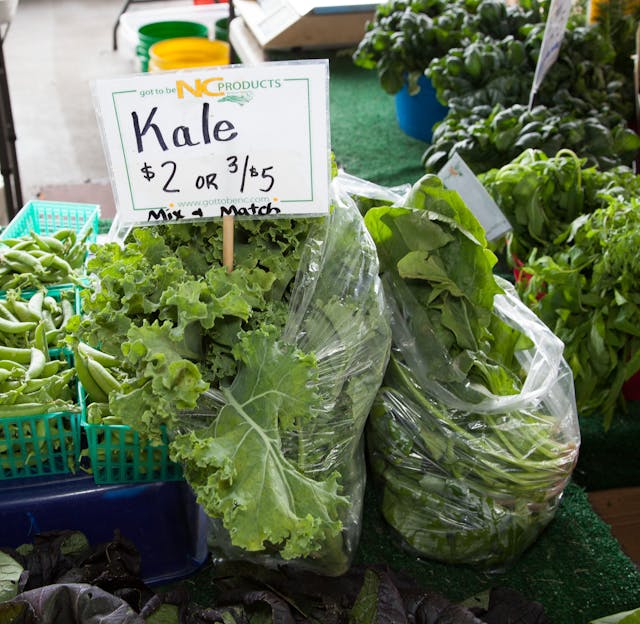Kale provides Nutrient-Rich Wellness
Hello, welcome to the Green Revolution! When it comes to healthy eating there is one vegetable that stands out as a nutritional powerhouse, and that vegetable is kale. In recent years, kale has been gaining popularity due to its many health benefits, flexibility in the kitchen, and beautiful green colour that matches any dish.

We’ll delve deeper into the wonders of kale in this blog article, discussing its history, nutritional value, culinary applications, and the many reasons why it should be a major part of your diet.
The Beginnings and the Formation:
In addition to being a member of the cabbage family, kale has a lengthy and illustrious history that dates back thousands of years. It was believed by the ancient Greeks and Romans that kale provided its growers with vitality and energy, and they treasured it for its nutritional content. Even in this day and age, kale continues to be a staple ingredient in a wide variety of various sorts of meals all around the world. As a result of its resilience, it may be depended upon as a crop throughout the whole year, regardless of the circumstances. Many people are praising kale for its delicious flavour and the many health benefits it offers, and the popularity of this vegetable is on the rise, regardless of whether it is grown in home gardens or on commercial farms.
The amount of calories:
In terms of available nutrients, kale is unparalleled. The plethora of vitamins, minerals, and antioxidants that kale contains is one of the reasons why it is usually referred to as a “superfood.” Kale provides many health advantages. In addition to containing essential minerals like potassium, magnesium, and calcium, a single cup of raw kale is a rich source of antioxidants such as vitamins A, C, and K, as well as folate. Because it is low in both carbohydrates and calories, kale is an excellent choice for those who are attempting to maintain a healthy weight or blood sugar level. Including kale in your diet regularly may help you achieve many health benefits, including a robust immune system, robust bones, and overall well-being.
The Benefits of Being Healthy:

Due to the many positive effects that it has on one’s health, kale is at the very top of the list of nutritious foods. Because of its high antioxidant content, which acts as a weapon against inflammation and oxidative stress, chronic diseases such as cancer and heart disease are less likely to arise. Kale is a rich source of vitamin A, which helps maintain good skin and vision, as well as vitamin K, which aids in the process of blood clotting and bone metabolism. Because it contains a high amount of water and fibre, kale is a fantastic tool for weight reduction and digestive health. It is high water and fibre content both help digestion and make you feel full more quickly. Incorporating kale into your diet is a great way to provide your body with nourishment from the inside out. In addition to being useful for eating, it also has other applications.
Use in Kitchen:
Adding kale to salads, smoothies and a variety of other meals will add rich flavour and nutrition. Its mild flavour pairs well with spicy, acidic sauces and powerful spices, and its robust leaves are beneficial to dishes like salads, stir-fries, soups and stews that are already strong. An alternative to potato chips that’s better for your health is a crispy snack made from cooked kale leaves that have been sprinkled with sea salt. Drinking smoothies made from blended kale is an excellent way to improve the amount of vitamins and minerals you consume regularly without compromising on taste. It is practically impossible to restrict the culinary applications of kale, and it can be used to give any meal a delicious and nutritious makeover.
Growing Your Kale:
Would you be interested in cultivating kale in your garden? luck you! Because it is so easy to cultivate, kale is a delicious vegetable that thrives in both traditional garden beds and small containers. To start, either spread kale seeds in an area that gets good sunlight or plant them in a potting mix. You have to ensure that the soil drains properly. After the process of moistening the soil and observing the

germination and growth of the kale plants, the plants require a minimal amount of maintenance. If you harvest kale at regular intervals, it’s possible to encourage new growth and ensure a consistent supply of fresh kale for all your culinary creations. Growing kale at home is a beneficial activity that brings you closer to nature, nourishes your body and mind and is a great way to connect with nature. This is true no matter how much or how little gardening experience you have.
Conclusion:
Kale is not only a trendy vegetable, but it is also a nutritional powerhouse that should be included in your diet. Since its early origins, kale has been considered a symbol of healthy living and vitality, and the trend is still going strong. In general, kale is beneficial for your health because it is a superfood that is rich in antioxidants, vitamins, and minerals! Kale is a nutritional powerhouse that, whether eaten raw or cooked, improves the flavour and texture of salads, stir-fries and smoothies. Kale can be consumed in any form, cooked or raw. If we keep all these things in mind, why not? Now is the time to start feeding your body, mind, and spirit with kale, and you’ll be thrilled to discover a beautiful path to wellness.
Frequently Asked Questions about Kale:
What is kale?
Kale, known for its emerald form, is a member of the cabbage family. The leaves of this vegetable, which can be either dark green or purple, have gained much popularity in recent years because they are both healthy and versatile in the kitchen.
2. What are the health benefits of kale?
Due to the high levels of vitamins, minerals and antioxidants it contains, kale is considered a superfood with the highest nutritional value. Apart from helping the immune system to function properly, it is beneficial for the cardiovascular system, digestive system, skin and bones at the same time.
3. How can I incorporate kale into my diet?
Kale can be consumed in many ways. Add it to salads, bake it into kale chips, blend it into smoothies, or add it to soups with other ingredients. To find the recipe you like best with this nutritious vegetable, you should experiment with many different recipes.
4. Is kale easy to grow?
There is a variety of temperatures in which kale can thrive, and it is also quite easy to produce. Because of its hardiness, it can deal with low temperatures and partial shade, but it is most successful when it is exposed to full sunlight and the soil is well-drained.
5. Are there different varieties of kale?
A wide range of preparations are available for kale. Curly kale, lacinato kale (also known as dinosaur kale), and red Russian kale are some examples of these types of vegetables. A variety of culinary experiences can be imagined as each type has a different taste and texture from the others.
6. Can I eat kale raw?
Beyond the shadow of a doubt! For a delicious taste, you can include raw kale in salads, sandwiches or smoothies using this ingredient. Olive oil or salad dressing, when massaged into kale leaves, softens them and brings out their natural flavour. This is especially useful for those who prefer to eat cooked kale rather than raw.
7. Is kale suitable for people with dietary restrictions?
The vegetable’s versatility makes it possible for individuals with a variety of dietary restrictions and preferences to consume kale. Since it is naturally free of gluten and contains low amounts of carbohydrates, you can consume it without feeling guilty if you are vegetarian or vegan. If you suffer from any of these medical conditions, you should consult your doctor before making any significant changes to your diet.
8. How should I store kale?
If you put kale in a plastic bag or airtight container and refrigerate it, you can keep it fresh for up to 36 hours. One week is the maximum time it can be stored without spoiling. If cleaned just before use, kale will retain its crispness and natural colour.
9. Can I freeze kale?
One of the best vegetables to have on hand is kale which has been frozen. Kale leaves should be blanched in boiling water for a few seconds before plunging into cold water. This will end the cooking process. After the drying process, place the item in a freezer bag or container that is airtight. Stir the mixture regularly and continue cooking for half an hour, or until it sets.
10. Where can I buy kale?
Kale is available for purchase at a variety of establishments throughout the world, including supermarkets, health food stores, farmers markets, and grocery stores. You should try to get some fresh kale from the produce section; If this is not possible, you can use frozen kale.
You may like these posts also 🙂




Pingback: 5 Reasons to Love Mother Bucker Pre Workout - My Best Niches